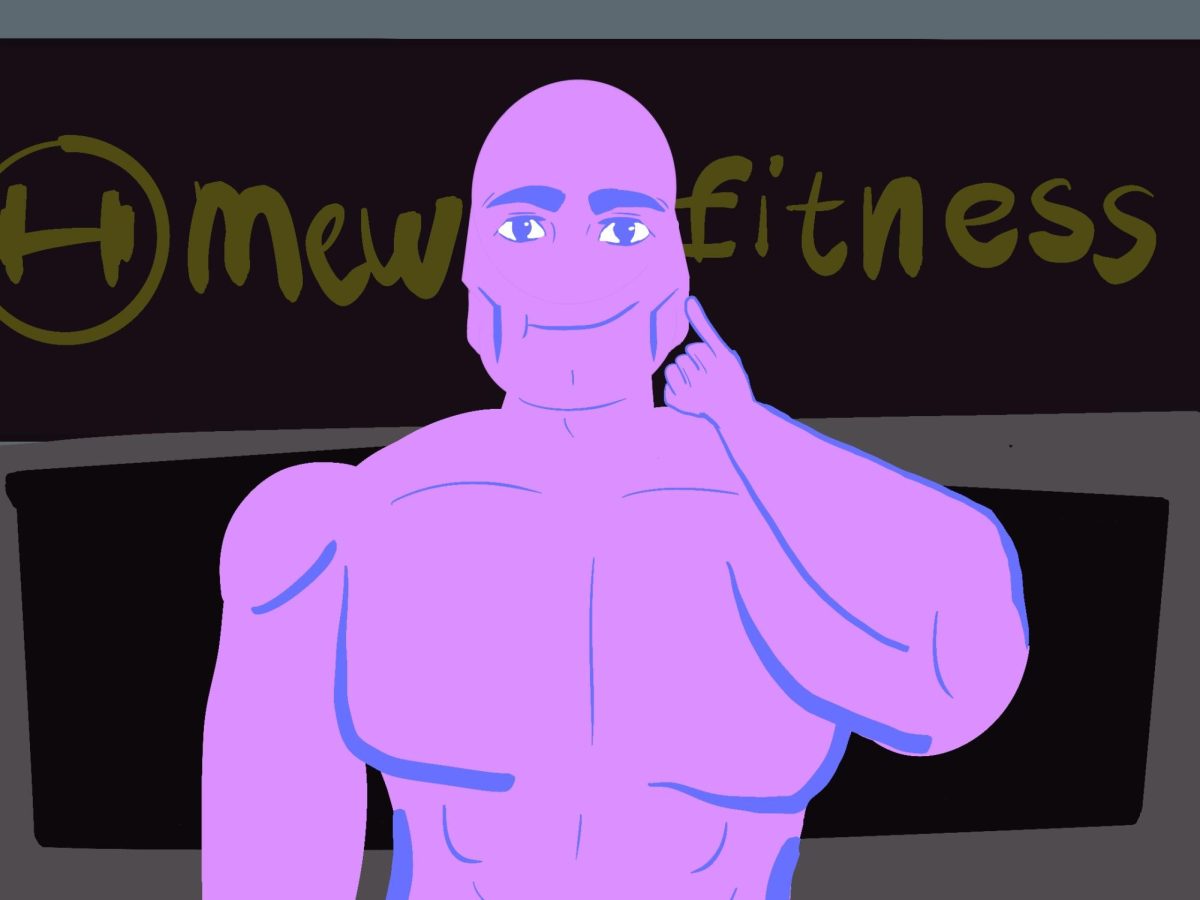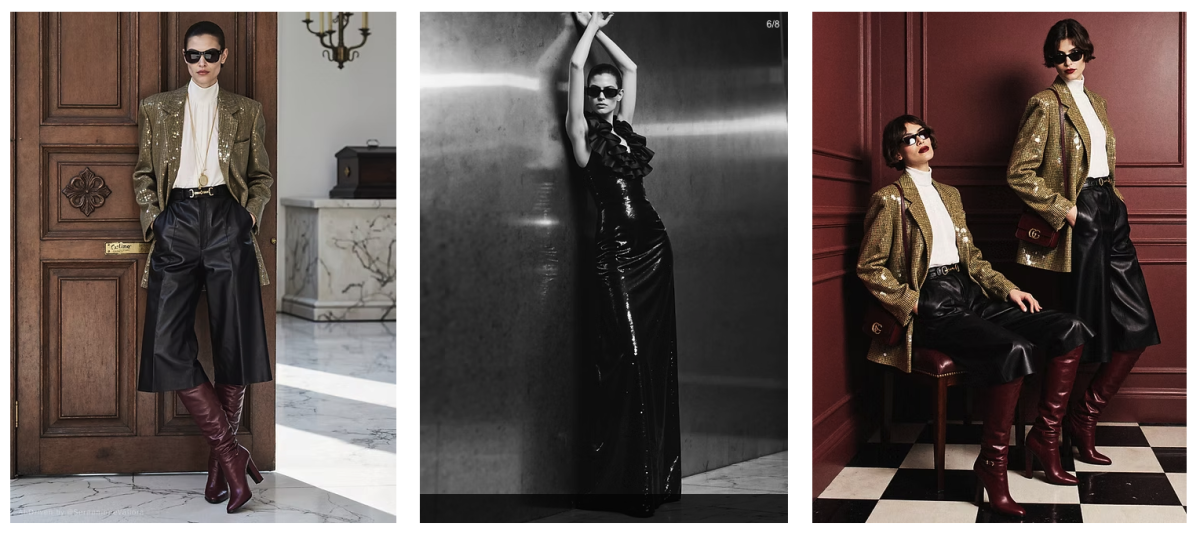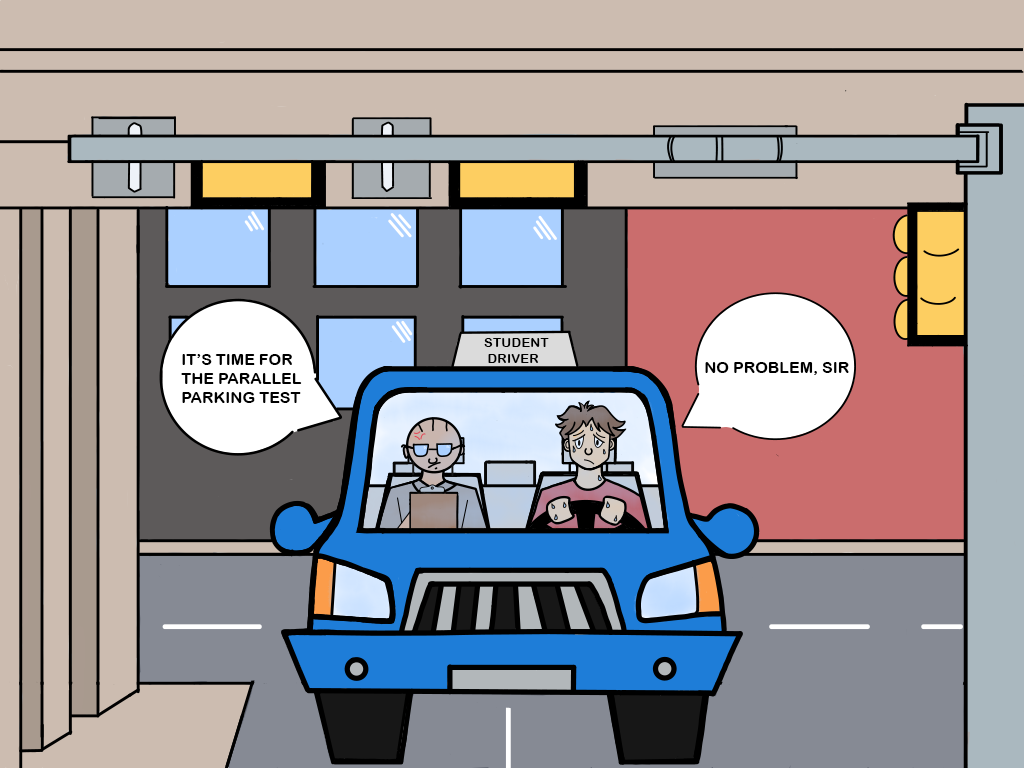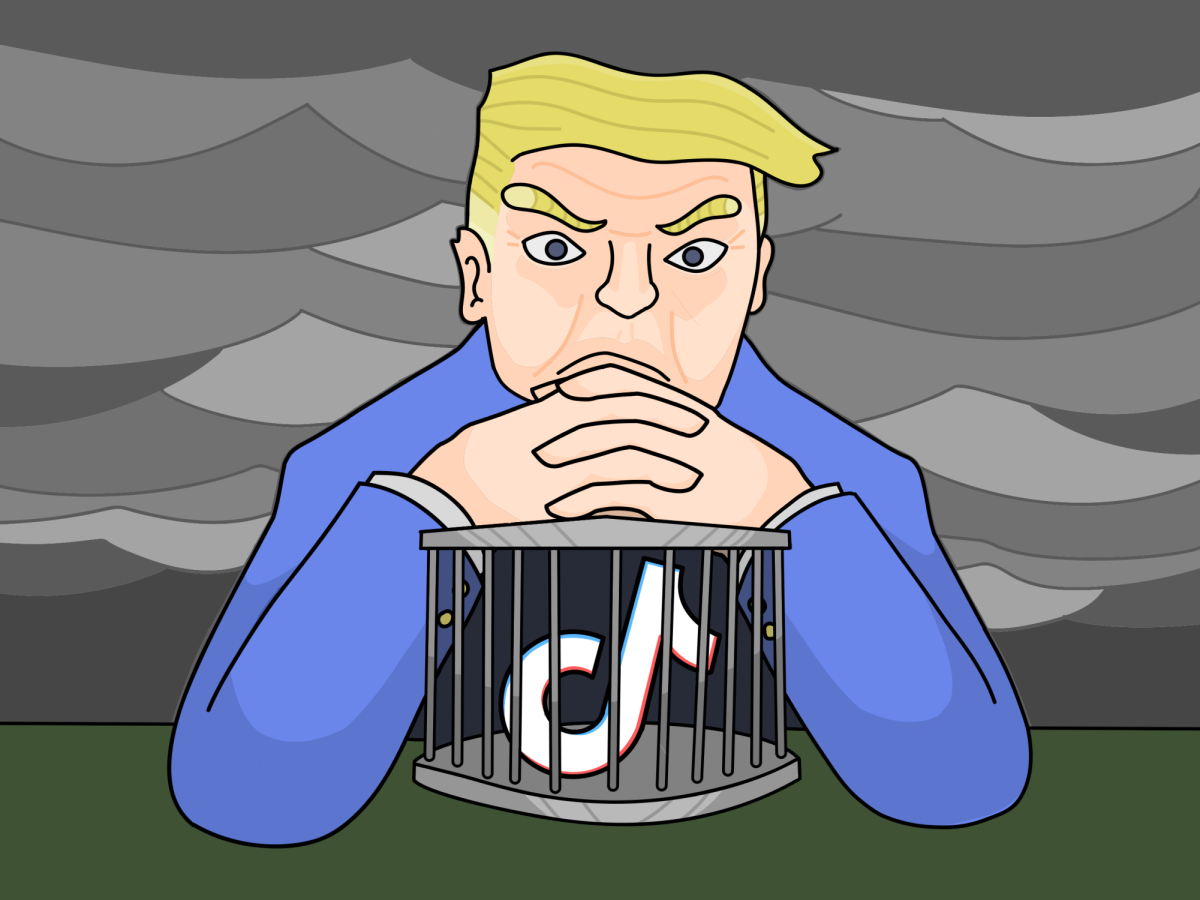If you want to look the best you can, you should be hitting yourself in the face with a hammer at least once a year — or, at least, this is what “looksmaxxers” on TikTok and Reddit are saying.
Although the phrase was coined in 2015, it didn’t gain traction in mainstream communities until the 2020s, with the biggest spike coming in 2023 with the rise in popularity of “mewing” which is the practice of tucking your tongue to the roof of your mouth for periods of time with the intent of sharpening your jawline.
While appearance has always been a big deal to a lot of people, quarantine during the height of the COVID-19 pandemic drew more attention to the level of self-care that people practice. A lot of people experienced “glow-ups,” and with many finding online stardom at the time, the camera and perceived attractiveness became more and more important.
For many, “looksmaxxing” is mostly treated as a joke. However, many are unaware that the concept has dark roots of which many are unaware – so dark in fact that it may seem like some insane rumor started on the depths of TikTok.
The website Looksmaxxer.com was registered to the Internet Archive in 2015 after associated practices became popular in “manosphere” forums in the 2010s. This creation of Looksmaxxer.com influenced the subsequent creation of related 4chan message boards. For those who aren’t familiar with 4chan, the site is commonly known for being an “incel” gathering place. A phrase that can also commonly be found on these looksmaxxing message boards is “black pill.”
The “manosphere” is, of course, a group of websites and online communities centered around being a man, with a particular focus of opposing feminism and promoting misogyny. “Incels” are involuntary celibates, most often associated with “manosphere” communities, who typically support extreme and often sexual violence against women and sexually active men. “Black pill” is a term that is closely related to both of these groups, describing an ideology of self-defeatism and sexism rooted in the belief that women will only choose the most attractive sexual partners, placing the blame on their sexual failures on women as a whole.
While many of these phrases may seem out of left field for many “looksmaxxing” enjoyers, it doesn’t take long to find content that seems very closely aligned with incel, manosphere, black-pilled ideas when scrolling through the tag on TikTok.
Terms such as “phenotype,” “canthal tilt,” and “BMI” are thrown around and presented as the end-all-be-all of being attractive. Phenotype seems to refer to the racial aesthetic of someone’s face, even sometimes skin color, and looksmaxxing forums and some TikTokers seem to recommend plastic surgery to “fix” a bad phenotype.
Canthal tilt also seems heavily racialized, referring to the angle of the outer corner of the eyes, prioritizing a “positive” tilt (or lifted outer corners) with double eyelids- a very Western standard. BMI is a phrase that many of us were introduced to in elementary school, the Body Mass Index that determines how under or overweight you are — and which was never intended for medical use, and began to be exposed as pseudoscience in the early 2000s.
With looksmaxxing becoming more popular on the internet, and the promotion of these factors on social media as definite measures of beauty and health, it’s only natural that young people become introduced to these new words and new insecurities. On any site or post related to the trend, it’s easy to find young boys — as young as 12 sometimes — lamenting about their eye posture, weight, jawline, and lack of romantic attention.
Despite this clear trend online, Akins students responded in an online survey that they don’t believe looksmaxxing has caused them to develop any new insecurities. One anonymous respondent said that while the trend hasn’t caused them to feel more insecure, “I think it does affect younger viewers.” The same respondent referred to the trend as a scam, a sentiment that was echoed by several others.
It’s important to note that many of these looksmaxxing influencers sell their own products, ranging from hand grip trainers and jaw trainers to supplements and diet pills. Understandably, a lot of these products are understood to be scams, or basic products that have been priced higher than they should be.
The consensus from the responding Akins students seemed to be in favor of looksmaxxing, and many said that they believe the trend has some truth to it, though most of the “effective” tactics seem to be basic self-care and hygiene.
This departure from previous looksmaxxing methods is certainly a welcome one, and prioritizes the use of basic skincare and dental hygiene products to “optimize” one’s natural beauty. However, not all looksmaxxing posts are created equal, and some still promote plastic surgery, supplements, and hammers to the face as trustworthy — and even necessary — aspects of improving your physical appearance.
While it’s unclear what the general opinion on looksmaxxing is from professionals, we do know that orthodontists view mewing, a practice coined by orthodontist John Mew, as a hoax that prevents people from getting the dental care they need. In January of this year, the American Association of Orthodontists released an article stating that “scientific evidence supporting mewing’s jawline-sculpting claims is as thin as dental floss.”
Mike Mew, son of John Mew and practicing orthodontist, is currently on trial for misconduct due to his promotion of mewing online. On his YouTube channel, Mew claimed that mewing was capable of reshaping the cranial structure and curing sleep apnea.
The trend of “bone smashing” is in the same boat as mewing as one of the few looksmaxxing-aligned practices that professionals actively denounce. Plastic surgeon Ben Schultz included blindness, abnormal growth of the bones, and bone weakness upon healing as some of the harmful side effects of this bizarre method of increasing attractiveness.
So, if these aspects of looksmaxxing are so dangerous, how have these practices become so popular on TikTok, and as a joke or as a real method? Even when these things are treated as a joke, people might still be internalizing these concepts as idealized forms of beauty.
In our society, being perceived as attractive is one of the most important things you can be. While young people don’t place much value on the seriousness of trends like looksmaxxing, it’s undeniable that some of the practices promoted are internalized to some extent. There’s a reason why looksmaxxing and other appearance-based trends get so much attention online, especially from young people.
It’s also worth considering how the origins of looksmaxxing relates to what it looks like today. With its creation on incel forums, it’s clear that it began as something focused on men, and this holds true today. All of the top “looksmaxxing influencers” are young men, and their idols are male models.
Looksmaxxing seems to be one of the few male-centric trends online that focuses on physical appearance, drawing in young men with the promise of making them more attractive. These feelings of insecurity, and the pressure from the idea that you’re doomed to die alone if you have low “sexual market value,” are likely the reasons why so many young men are susceptible to falling prey to incel thinking and behavior.













